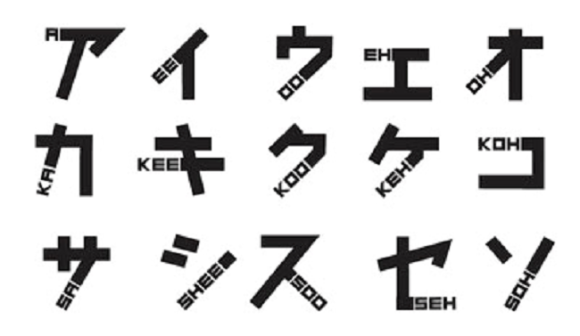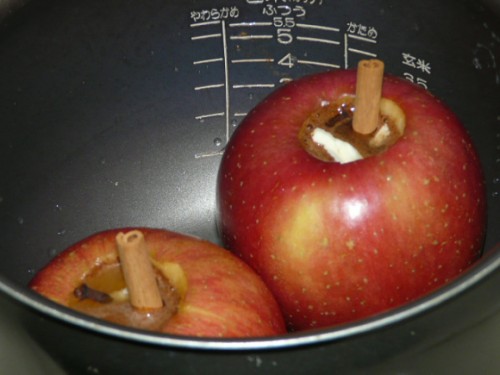【RocketNews24】Learn Japanese from YouTube: Amp up your listening skills with this four-step guide
Posted by Michelle Lynn Dinh (Shimane-ken, Chibu-mura, 2010–13), editor and writer for RocketNews24. The following article was written by Fran Wrigley, writer and translator for RocketNews24, a Japan-based site dedicated to bringing fun and quirky news from Asia to English speaking audiences.
It used to be that if you were studying a foreign language in your own country, the only listening practice that was easily available to you was hearing your teacher or classmates speak, or listening to the CD that came with your textbook. The first Japanese textbook I ever bought actually came with a cassette tape, which was particularly irritating as it was 2006 and I didn’t even own a Walkman any more.
Then someone invented a website that allowed users to upload short videos for all the world to see. Fast-forward nine years and YouTube is one of the biggest sites on the planet, making it a veritable treasure trove of free online spoken content.
So whether you’re after language lessons, YouTubers who vlog in Japanese, or just want to try watching your cat videos in a foreign language, online videos could be your new secret weapon. The trick is just knowing where to look.
Continue to our four-step guide here!
JET alum’s column on Ebola in USAToday
JET alum Emily Metzgar (Shimane-ken, 1995-93), a professor of journalism at Indiana University, has a column in USAToday this week titled, “Is U.S. ‘stuck on stupid’ on Ebola outbreak?”
If Emily’s name sounds familiar, it’s because she’s also the author of Promoting Japan: One JET at a time, a paper based on surveys of and research on the JET alumni community that attempts to measure return on JET-vestment.
I’ll Make It Myself!: Marketing Halloween in Japan: Pocky
L.M. (CIR Ishikawa-ken, Anamizu, 2009-11) is the editor of The Ishikawa JET Kitchen: Cooking in Japan Without a Fight. Ze works in international student exchange; writes I’ll Make It Myself!, a blog about food culture in Japan and the US; curates The Rice Cooker Chronicles, a series of essays by JETs and JET alumni on the theme of cooking/eating and being alone in Japan; and admins The JET Alumni Culinary Group on LinkedIn.
Pocky’s been doing Halloween-themed packaging for a few years but I hadn’t written about it because the product was the same. This year, Pocky has Halloween packaging for the normal chocolate and strawberry flavors but also a Kumamon (the mascot of Kumamoto prefecture)-themed “sweet pumpkin” flavor!

Via Glico
【RocketNews24】Clever font sneaks pronunciation guide for English speakers into Japanese katakana characters

Written Japanese uses three kinds of script. At the top of the difficulty curve, you’ve got kanji, the complex characters originally imported from China that can require over a dozen brush strokes to write, with each kanji representing a word or concept.
A little less challenging are hiragana, a set of 50 curving phonetic characters, but if English is your native language, odds are you’ll have the least trouble with angular katakana. Like hiragana, katakana is a phonetic system, so each character corresponds to a syllable. Even better, while often one kanji can have three or four possible readings, each katakana has just one possible pronunciation.
Of course, you still have to memorize how to pronounce all 50 katakana (85 if you’re being really technical) in the first place. One group of graphic designers are aiming to make that task a little easier, though, with a font that combines katakana with phonetics written in English.
WIT Life #278: High Speed Rail Plan (via the Onion)
WIT Life is a periodic series written by professional Writer/Interpreter/Translator Stacy Smith (Kumamoto-ken CIR, 2000-03). She starts her day by watching Fujisankei’s newscast in Japanese, and here she shares some of the interesting tidbits and trends along with her own observations.
Apropos of nothing, can’t resist sharing this gem from the Onion. I love how they use the actual train names/types. 良い3連休を!
WIT Life #277: Garden of Unearthly Delights
WIT Life is a periodic series written by professional Writer/Interpreter/Translator Stacy Smith (Kumamoto-ken CIR, 2000-03). She starts her day by watching Fujisankei’s newscast in Japanese, and here she shares some of the interesting tidbits and trends along with her own observations.
As a member of Japan Society, last night I had the chance to preview the new gallery exhibition Garden of Unearthly Delights. It featured works from two artists and the collaboration teamLab that were largely fantastical with a strong dose of social commentary. As a result, it felt like a very dense exhibit that seemed to occupy more space than the gallery’s actual square footage. 
Garden begins with works from Manabu Ikeda, an artist originally from Saga Prefecture who now resides in Madison, Wisconsin after previously living in Vancouver. The focus of his paintings in this show are on disaster art and 311, an event he witnessed from outside the country. You can see many manga and anime-like aspects in them as well. I particularly liked his work Foretoken, which is often compared to Hokusai’s The Great Wave off Kanagawa, displayed nearby in the gallery. Upon close inspection you can see the intricate detail of his infinite brushstrokes, but when you look at it from a distance you get a whole other perspective. Underneath the huge wave that is cresting you can find things like Read More
【Exploring Unfamilar Japan】We have dessert and meet a cow named Julia at an organic island café
Michelle Lynn Dinh (Shimane-ken, Chibu-mura, 2010–13) is an editor and writer for RocketNews24, a Japan-based site dedicated to bringing fun and quirky news from Asia to English speaking audiences.
La Cigale is a family-run cafe located in the heart of the largest of the Oki Islands, but it’s much more than a place to get a thoughtful cup of coffee. La Cigale is a hub for the community that supports local events and hosts field trips to teach children about sustainable farming. It’s also a place where neighbor kids gather to help pick vegetables or collect shiitake mushrooms in the nearby mountains. So while we thoroughly enjoyed the coffee parfait we indulged in at La Cigale, we were completely taken with the cafe’s farm-to-table philosophy and the intriguing history of its proprietors.
Read more at RocketNews24
I’ll Make It Myself!: Fig-Almond Muffins (Dairy-Free)
L.M. Zoller (CIR Ishikawa-ken, Anamizu, 2009-11) is the editor of The Ishikawa JET Kitchen: Cooking in Japan Without a Fight. Ze works in international student exchange; writes I’ll Make It Myself!, a blog about food culture in Japan and the US; curates The Rice Cooker Chronicles, a series of essays by JETs and JET alumni on the theme of cooking/eating and being alone in Japan; and admins The JET Alumni Culinary Group on LinkedIn.
More muffins! These fig-almond muffins are perfect for autumn and easy to make in Japan. If you’re looking for a break from all the cinnamon and pumpkin products, try one of these!
I’ll Make It Myself!: Marketing Halloween in Japan 2014: KFC Halloween Bucket
L.M. Zoller (CIR Ishikawa-ken, Anamizu, 2009-11) is the editor of The Ishikawa JET Kitchen: Cooking in Japan Without a Fight. Ze works in international student exchange; writes I’ll Make It Myself!, a blog about food culture in Japan and the US; curates The Rice Cooker Chronicles, a series of essays by JETs and JET alumni on the theme of cooking/eating and being alone in Japan; and admins The JET Alumni Culinary Group on LinkedIn.

Source: KFC Japan
As I’ve written before, Halloween has exploded into the Japanese food scene. Ten years ago, there were–as to be expected–barely any Halloween specials or goods. An increasingly large cultural shift toward Halloween as popular (children’s) holiday began sometime around 2010. While some of the shift was motivated by consumer demand, the ramped up marketing has increased awareness and consumer demand, leading other businesses to make their own Halloween specials to keep up with the popularity of the holiday.
This time, we cover KFC’s Halloween campaign.
【RocketNews24】New tax exemption system for foreign visitors to Japan starts today!
Posted by Michelle Lynn Dinh (Shimane-ken, Chibu-mura, 2010–13), editor and writer for RocketNews24. The following article was written by Jessica, a writer and translator for RocketNews24, a Japan-based site dedicated to bringing fun and quirky news from Asia to English speaking audiences.
If you are a regular RocketNews24 reader, you may already know that there have been a lot of changes to Japan’s consumption tax system this year. For those of us who live here, it’s meant an annoying price hike for nearly everything, but for visitors, there is some good news.
Starting today, October 1, new rules regarding consumption tax exemptions for foreign visitors go into effect, and for once, these are actually changes that work in your favor. More details after the jump.
I’ll Make It Myself!: Whole-Wheat Blueberry-Lavender Muffins
L.M. Zoller (CIR Ishikawa-ken, Anamizu, 2009-11) is the editor of The Ishikawa JET Kitchen: Cooking in Japan Without a Fight. Ze works in international student exchange; writes I’ll Make It Myself!, a blog about food culture in Japan and the US; curates The Rice Cooker Chronicles, a series of essays by JETs and JET alumni on the theme of cooking/eating and being alone in Japan; and admins The JET Alumni Culinary Group on LinkedIn.
Muffins are lovely to make in a moven/oven range. Blueberries tend to be in season in Japan around June-July, and culinary lavender can be purchased in Japan, though where you get it may depend on where you live. I found some at Ikeda Herb Center in Nagano and Nunobiki Herb Garden (English, 日本語) in Kobe, and a friend gave me some from Meidi-ya in Kyoto. If you don’t live near a place that grows lavender, you might try a gourmet grocery or import store, or online. Lavender meant for cooking may be referred to as dried lavender (kansô rabendâ, 乾燥ラベンダー ) or culinary lavender (ryôriyô no rabendâ, 料理用のラベンダー ).
JET alum publishes book on getting unstuck: “Dream in Color, Think in Black & White”
 Jonathan Bissell (Chiba-ken, 1995-2000) has written a “how-to” guide to getting unstuck and pursuing your life or career dreams. A timely topic as many JETAA chapters are hosting career forums over the next few weeks. His book, entitled “Dream in Color, Think in Black & White: How to Get Unstuck and Fulfill Your Dreams” is now available on Amazon in both Kindle and paperback. For complete details visit amazon.com/author/jonathanbissell.
Jonathan Bissell (Chiba-ken, 1995-2000) has written a “how-to” guide to getting unstuck and pursuing your life or career dreams. A timely topic as many JETAA chapters are hosting career forums over the next few weeks. His book, entitled “Dream in Color, Think in Black & White: How to Get Unstuck and Fulfill Your Dreams” is now available on Amazon in both Kindle and paperback. For complete details visit amazon.com/author/jonathanbissell.
Description:
The world is filled with dreamers, but it’s owned by people who do. Yet too many dreamers are stuck, unhappy and unfulfilled in their life or career. They don’t know how to move forward or what to do next. Dream in Color, Think in Black & White is a focused and powerful book that provides practical and encouraging step-by-step guidance for dreamers everywhere who want to get unstuck and fulfill their dreams, but don’t know how.
Introduction:
Admit it. You’re stuck. Somewhere along the way, you had a dream that you let go of. But it hasn’t let go of you. You’re the reason this book was written. Because dreams matter. Dreams are powerful. And sometimes dreams just won’t go away – no matter how impractical, ill-timed or financially risky they are.
This is a book about getting unstuck in your life or career. It’s about learning to Dream in Color and Think in Black & White. There are three parts to this book: Dreaming in Color, Thinking in Black & White, and Fulfilling Your Dreams. Each part contains practical “how to” steps and examples explaining how to get unstuck and move toward your dream. The rest is up to you. Let’s get started.
Early Responses to Dream in Color, Think in Black & White:
“a superb must-read…a roadmap of balance and success”
Chaya Abelsky, Master Certified Coach, Principal at Triumphant Journeys LLC and Director of the NonProfit HelpDesk.
“powerfully written…compels you into creating a plan”
Jane A Creswell, Master Certified Coach, founder of IBM Coaches’ Network, CEO of iNTERNAL iMPACT, LLC, and the author of two books.
“a how-to guide for anyone seeking career and personal fulfillment”
Luther Jackson, Board Member, American Leadership Forum – Silicon Valley.
WIT Life #276: San Diego’s San-Kei-En garden
WIT Life is a periodic series written by professional Writer/Interpreter/Translator Stacy Smith (Kumamoto-ken CIR, 2000-03). She starts her day by watching Fujisankei’s newscast in Japanese, and here she shares some of the interesting tidbits and trends along with her own observations.
My interpreting gig continues westward, and I am currently with my interpreting clients in San Diego. It was my first time here in a while, and I was looking forward to seeing what Japanese connections awaited. As a result, I was happy to have some time in between appointments to visit the Japanese Friendship Garden in Balboa Park with my group. It’s official name is 三景園 (“San-Kei-En”), which means Water, Pastoral and Mountain. San Diego’s sister city in Japan is Yokohama, and the garden was designed to be an expression of the ties between the people of the two cities. Its gate is dedicated to Charles C. Dail, the former Mayor who began this sister city program in 1957.
Classes offered at San-Kei-En include ikebana, origami, bonsai and tea ceremony. The original Japanese tea house in Balboa Park had an interesting story. It was built for the Panama-California Exposition in 1915, and when the city couldn’t operate it post-exposition a Japanese couple managed it until 1941. Read More
【RocketNews24】Use your rice cooker to bake delicious cinnamon honey apples
Posted by Michelle Lynn Dinh (Shimane-ken, Chibu-mura, 2010–13), editor and writer for RocketNews24. The following article was written by Oona McGee, a writer and translator for RocketNews24, a Japan-based site dedicated to bringing fun and quirky news from Asia to English speaking audiences.
Life can be tough in Japan when the weather starts getting cooler and cravings for baked comfort foods start taking hold of our thoughts. With full-size western ovens an absolute rarity in the common Japanese home, roast dinners and home-baked pies become more like lost friends from a bygone era; somewhere else but still etched in our hearts and never quite forgotten.
If the Japanese kitchen is lacking in the stove department, it makes up for it in volumes with a marvellous piece of wizardry known as the rice cooker. Its mettle has only recently been put to the test with some surprising recipes like fast food dinners and enormous pancakes of epic proportions. And now as the weather cools, there’s another easy recipe to try – soft baked cinnamon honey apples.
Get the recipe here!
I’ll Make It Myself!: White Bread: A Social History of the Store-Bought Loaf
L.M. Zoller (CIR Ishikawa-ken, Anamizu, 2009-11) is the editor of The Ishikawa JET Kitchen: Cooking in Japan Without a Fight. Ze works in international student exchange; writes I’ll Make It Myself!, a blog about food culture in Japan and the US; curates The Rice Cooker Chronicles, a series of essays by JETs and JET alumni on the theme of cooking/eating and being alone in Japan; and admins The JET Alumni Culinary Group on LinkedIn.
White Bread: A Social History of the Store-Bought Loaf
Aaron Bobrow-Strain
Beacon Press, Boston. 2012
For those interested in food history and culture, White Bread: A Social History of the Store-Bought Loaf, which mainly deals with US bread culture, also covers the rise of shokupan (食パン) in Japan, specifically how SCAP tried to use bread and other “democratic” pastimes (kissing in films, for example) to “break” Japan of its “imperialist notions.”
Although Bobrow-Strain isn’t a Japan specialist, his careful treatment of Japanese food culture and its globalization is a welcome change from mainstream media’s obsession with wacky Japan and even NPR’s weirdly one-sided articles.








